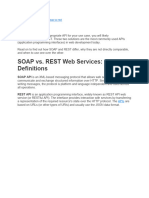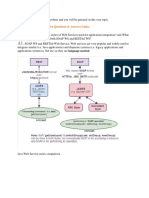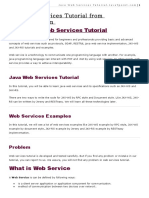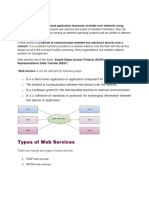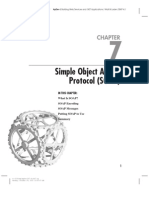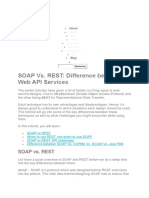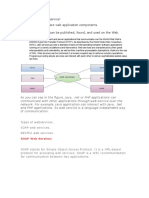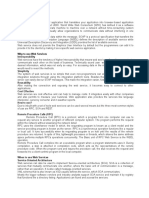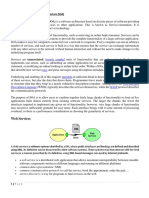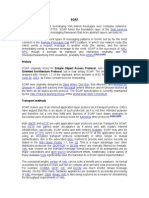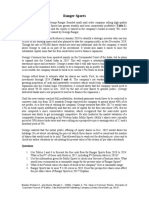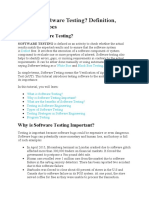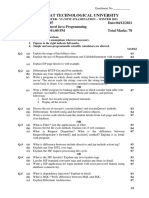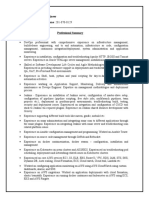0% found this document useful (0 votes)
108 views5 pagesSOAP Vs REST
SOAP is a more rigid messaging standard than REST, relying on XML and various extensions for features like security and reliability. While SOAP is highly standardized and extensible, using it can be complex, especially when building requests manually in some languages. REST provides a lighter-weight alternative, using simple URLs and standard HTTP methods instead of XML messaging. The best approach depends on factors like the targeted web service and programming language. [/SUMMARY]
Uploaded by
Mohan KrishnaCopyright
© © All Rights Reserved
We take content rights seriously. If you suspect this is your content, claim it here.
Available Formats
Download as DOCX, PDF, TXT or read online on Scribd
0% found this document useful (0 votes)
108 views5 pagesSOAP Vs REST
SOAP is a more rigid messaging standard than REST, relying on XML and various extensions for features like security and reliability. While SOAP is highly standardized and extensible, using it can be complex, especially when building requests manually in some languages. REST provides a lighter-weight alternative, using simple URLs and standard HTTP methods instead of XML messaging. The best approach depends on factors like the targeted web service and programming language. [/SUMMARY]
Uploaded by
Mohan KrishnaCopyright
© © All Rights Reserved
We take content rights seriously. If you suspect this is your content, claim it here.
Available Formats
Download as DOCX, PDF, TXT or read online on Scribd
/ 5
